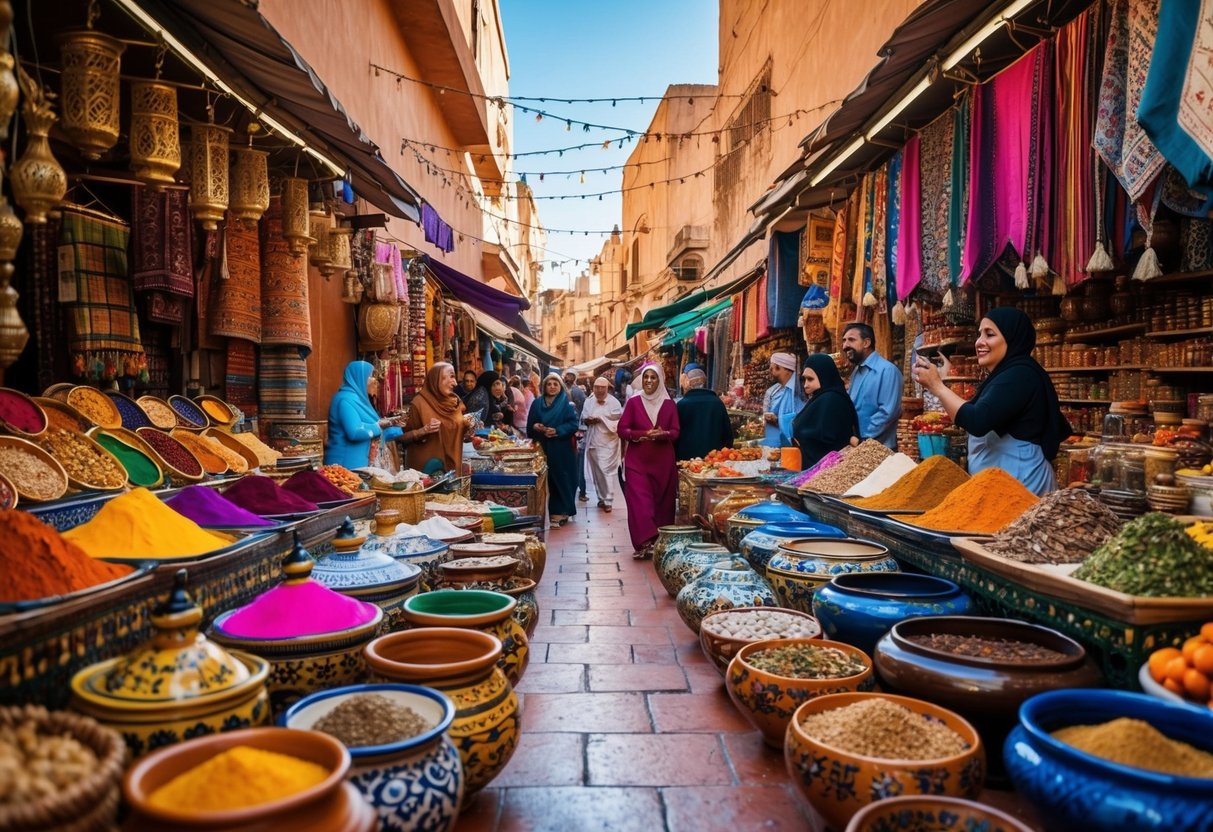
Morocco’s vibrant souks are more than just markets; they are living, breathing reflections of the country’s rich culture and history. From the bustling alleys of Marrakech to the hidden gems of Fes, these marketplaces offer a sensory overload of colors, sounds, and scents. To experience an authentic Moroccan market, it’s crucial to know the local customs and best practices.
Engaging with local vendors is part of the charm and a great way to learn about Moroccan culture. Negotiating prices, a common practice, can also make your shopping experience more enjoyable. Knowing a few basic Arabic phrases can go a long way in fostering positive interactions.
Whether you are in search of unique handicrafts, spices, or traditional clothing, each souk offers something special. Exploring these markets provides a deeper insight into the daily life and traditions of Morocco. From the vibrant displays to the friendly locals, every visit promises a new discovery.
The Allure of Marrakech Souks
Marrakech is renowned for its vibrant souks that offer an authentic glimpse into Moroccan tradition. These bustling markets are filled with colorful stalls, aromatic spices, and intricate handicrafts.
Exploring Souk Semmarine
Souk Semmarine is one of the largest and most famous markets in Marrakech. It welcomes visitors with a labyrinth of narrow alleyways lined with shops displaying a kaleidoscope of goods.
Shoppers find everything from handmade carpets to silver jewelry here. The market is particularly known for its leather goods, a tradition that has been cultivated over centuries. Vendors are usually eager to share the stories behind their crafts, adding to the market’s charm.
The best time to visit is in the early morning or late afternoon, when the crowds are thinner. Bargaining is common and expected, making each purchase a unique experience. This souk provides a sensory overload, a true representation of the Moroccan market culture.
The Central Role of Jemaa El Fna Square
Jemaa El Fna Square acts as the heart of Marrakech, serving not only as a market but also as a stage for various cultural performances. By day, it’s a bustling bazaar where local traders display goods ranging from spices to traditional textiles.
As evening approaches, the square transforms. Food stalls emerge, offering traditional Moroccan dishes such as tagine and couscous. Street performers, including snake charmers and musicians, captivate onlookers and create an electrifying atmosphere.
This square serves as a meeting point for both locals and tourists. It reflects the traditions and lifestyles of Marrakech, making it an essential part of any visit to the city. The vibrancy and historical significance of Jemaa El Fna make it a cornerstone of the Marrakech souk experience.
Souvenirs and Crafts of the Moroccan Markets
Morocco’s markets are a treasure trove of unique souvenirs and exquisite crafts. From colorful carpets to aromatic spices, visitors will find an array of items that embody the rich cultural heritage of the country.
Carpet Souk: Weaving History
The Carpet Souk is a tapestry of Morocco’s history, culture, and craftsmanship. Visitors will encounter hand-woven carpets and rugs, each boasting vivid colors and intricate patterns. Artisans use techniques passed down through generations, with materials like wool, silk, and cotton.
Carpets often feature traditional Berber designs or Arabesque motifs. Prices vary, and haggling is expected. Buyers should take time to appreciate the quality and detail. A genuine Moroccan carpet is more than a floor covering; it is a piece of art capturing centuries of tradition.
Leather Souk: The Scent of Craftsmanship
The Leather Souk is renowned for its high-quality leather goods. Artisans in this market use traditional tanning processes, creating products like bags, belts, slippers, and cushions. The air is filled with the distinctive smell of leather and dyes, part of the crafting process.
Leather markets in Fez and Marrakech are particularly famous. Shoppers can find a range of items, from rustic to refined. Each piece reflects the skill of its maker. The rich colors and supple textures make these goods both practical and stylish souvenirs.